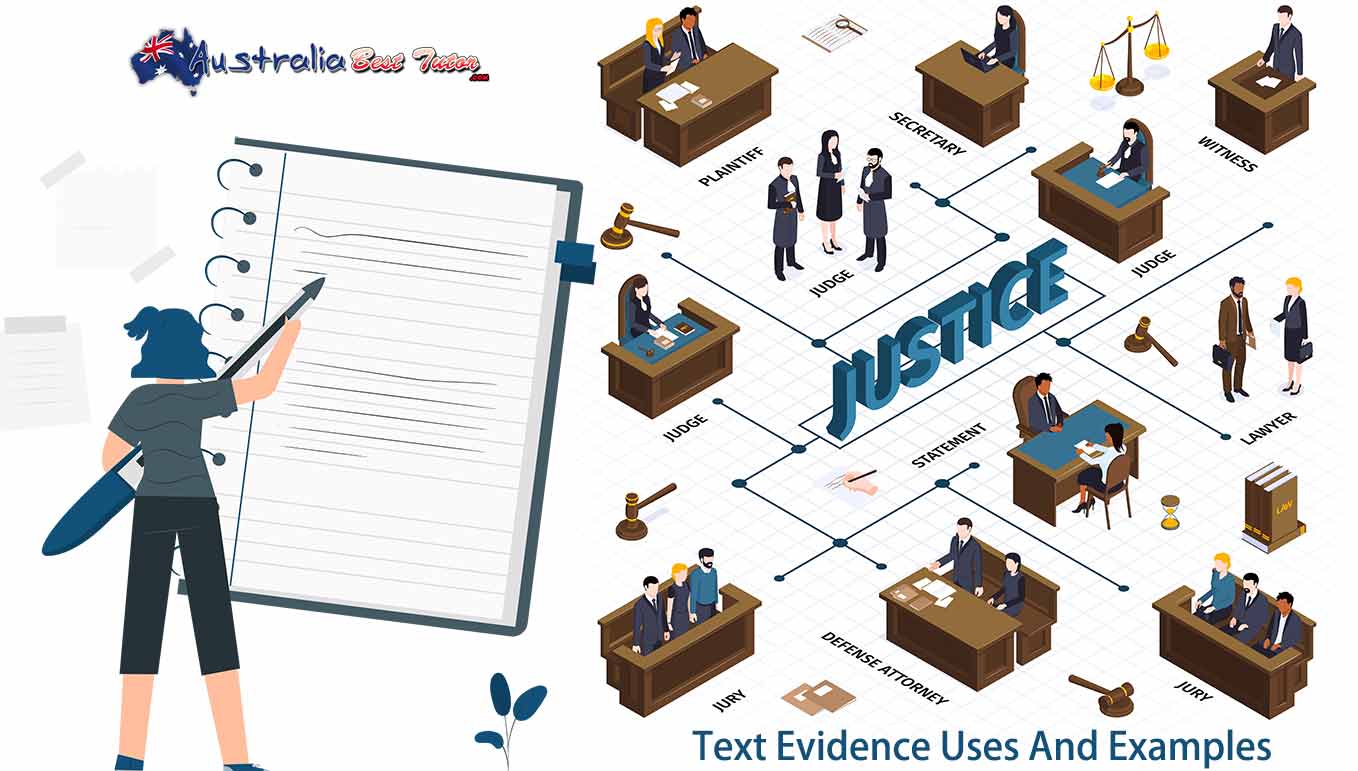Text Evidence Uses And Examples
Meaning of Text Evidence
Text Evidence is any Evidence from a fiction or genuine text that can be utilized to help thoughts, contentions, sentiments, and considerations. At the point when we refer to printed Evidence, we rework, statement, or allude to the particular piece of the text that we are utilizing to back up or uphold our musings and thoughts.

Why is Text Evidence Important?
While investigating a text, it is essential to give these particulars to help your contention and give it authenticity. Anybody can say, ''Romeo and Juliet kick the bucket toward the finish of Romeo and Juliet,'' yet assuming somebody was new to the play, they would observe greater expert in an assertion like, ''In Act 5, Scene 3 of Romeo and Juliet, Romeo and Juliet both commit suicide, with Romeo saying, 'Hence with a kiss I pass on' (130).'' In this example, we will talk about viable ways of referring to literary Evidence while examining a text to help your assignment cases and, just as what doesn't consider adequate help.
When the use of Textual Evidence is made
As we saw above, utilizing literary Evidence, or explicit citations and models from a message that straightforwardly connects with your point is fundamental for supporting your contention, especially in scholarly composition. However, how do you have any idea about when to utilize printed Evidence and when not to? The key is to track down equilibrium in utilizing Evidence - you need to help your focus with Evidence from the text, yet you likewise don't have any desire to abuse citations and neglect to focus on your contention.
Examples of Textual Evidence
Whenever you have concluded that you should uphold your point with text-based proof, how would you choose what to utilize? The two most significant interesting points while picking what citations to utilize are appeal and explicitness. You first need to consider if the citation or model you are thinking about utilizing straightforwardly connects with your point. For instance, if you were discussing Romeo kicking the bucket, you would not have any desire to utilize a citation about his wedding Juliet because it doesn't promptly connect with your primary concern.
Likewise, you need to be explicit and compact. At the point when you portray Romeo's demise, you could utilize a citation that shows him committing suicide or depicts why he chooses to do this, however this ought to be brief. You need to remain explicit and not quote his whole last discourse. Some of the time, for explicitness, you should summarize, or rehash a statement or entry in the most natural-sounding way for you, rather than straightforwardly citing the text. Recall that both need legitimate in-text references, however, citations, or in the entries of the same word from the text, ought to consistently utilize quotes.
Conclusion
A decent guideline is that something like 25% of your paper ought to be comprised of citations and models. So how would you choose when to utilize the Evidence assuming you are so restricted? While dissecting a text, it is enticing to utilize your words to associate citations; notwithstanding, the place of text-based investigation is to make your contention, then, at that point, use citations and guides to help it, rather than the opposite way around. Rather than supporting every one of your focuses with a citation, attempt to settle on your central matters - or maybe the focuses that appear to be most fragile - and afterward use citations and guides to help those.




